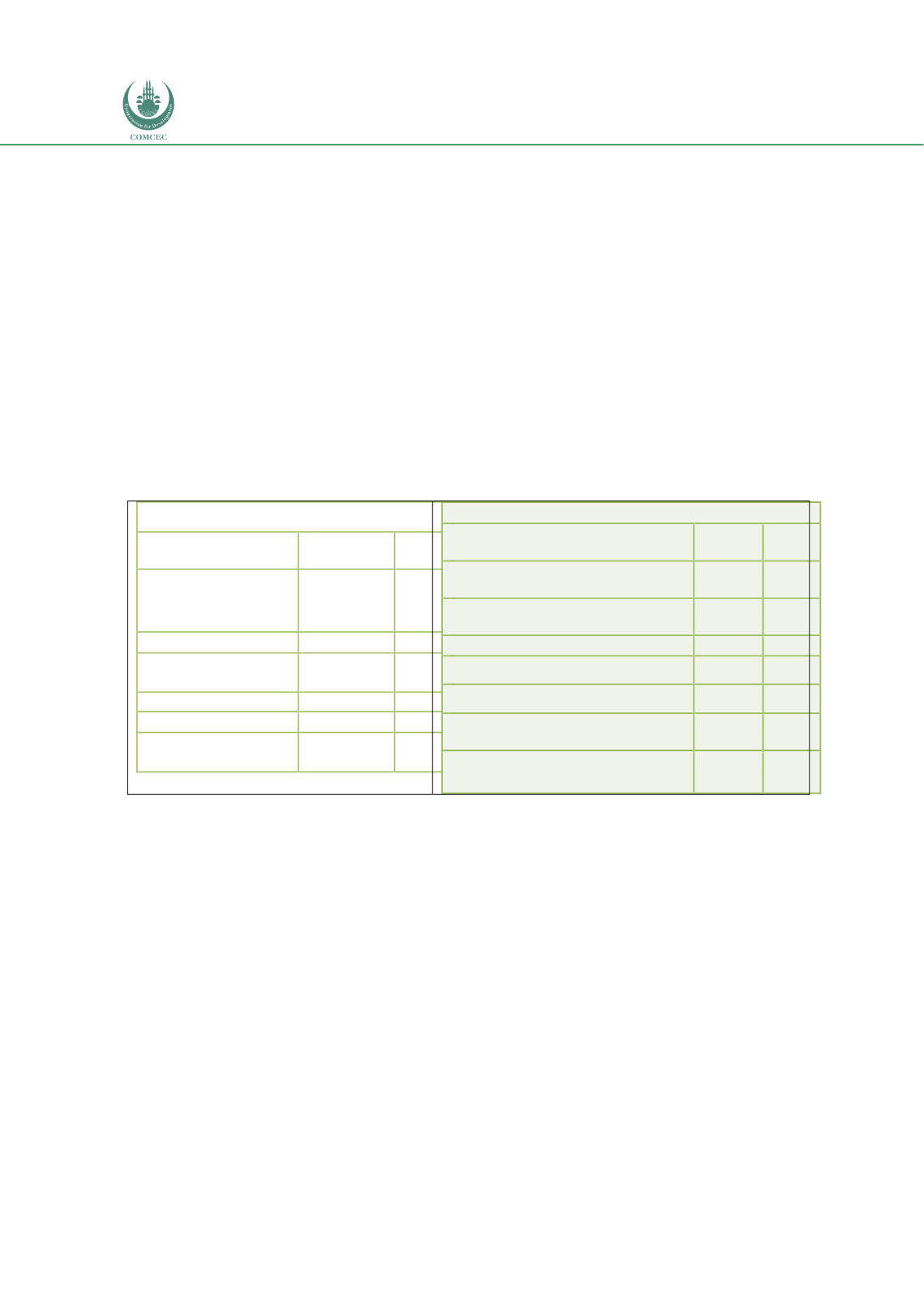

Infrastructure Financing through Islamic
Finance in the Islamic Countries
102
4.2.5.2.
Islamic Financial Institutions
Financial institutions that provide Shariah-compliant financing for infrastructure projects and
entities include Islamic banks, takaful companies, and other institutional investors such as
pension funds. The asset composition and contribution of the Malaysian Islamic banking sector
in financing the infrastructure sector is shown in Table 4.2.3. The total assets of Islamic banks
in Malaysia in Q1 2018 were RM 665,288 billion (USD 172.265 billion). While the total
Shariah-compliant financing of Islamic banks was RM 490,841 billion, constituting 73.8% of
the total assets, only RM 29,112 billion (USD 7,538 billion) or 4.38% of this went to finance the
infrastructure sector. Within the infrastructure sector, transportation and storage secured the
highest financing of RM 11,78 billion (or 1.77% of the assets), followed by education with RM
8,965 billion (or 1.35% of assets). While the table showed that the sukuk holdings of Malaysian
Islamic banks were valued at RM 86,897 billion (or 13.1% of the total assets), information on
the proportion used for the infrastructure was not available.
Table 4.2. 3: Islamic Banks Assets Composition and Financing of Infrastructure Sector (Q1
2018)
Total Islamic Banking Assets
Asset Composition
RM (million)
% of
total
Total Shariah-compliant
financing (excluding
interbank financing)
490,841.3
73.8%
Sukūk holdings
86,897.6
13.1%
Other Sharī`ah-
compliant securities
80.4
0.0%
Interbank financing
63,964.8
9.6%
All other assets
23,504.8
3.5%
Total assets
665,288.9
100.0%
Infrastructure Financing by Islamic Banks
Financing going to infrastructure
RM
(million)
% of
total
Electricity, gas, steam and air-
conditioning supply
2,505.4
0.38%
Water supply; sewerage and
waste management
0.0
0.00%
Transportation and storage
11,780.2 1.77%
Information and communication 3,744.9
0.56%
Education
8,965.3
1.35%
Human health and social work
activities
2,116.7
0.32%
Total infrastructure
29,112.6
4.38%
Source: IFSB Prudential and Structural Islamic Financial Indicators (PSIFIs)
As discussed in Chapter 2, the small share of the investments in the infrastructure sector can
be attributed to various factors. Since assets are financed by liquid deposits that are short
term, there is limited scope for investing in assets that are long term and illiquid. Furthermore,
the BASEL III standards impose higher capital requirements for longer-term financing, which
also discourages investment in infrastructure projects. A better way to invest in infrastructure
would be to invest in sukuk issued by the infrastructure firms. The sukuk holdings of
Malaysian Islamic banks are 13.3% of the total assets, which is almost double that of
investments in the infrastructure sector. Since a part of sukuk is issued by the infrastructure
sector, Islamic banks contribute to the sector indirectly through capital markets.
Since IFSA distinguishes between deposit and investment accounts, one way in which Islamic
banks can increase the investments in the infrastructure sector is to use some of the funds
from the latter in projects. As indicated, the proceeds from the investment accounts are
collected in the Investment Account Platform (IAP) and are invested in different ventures and
projects. Though the focus of IAP investments has so far been on business ventures, one
















